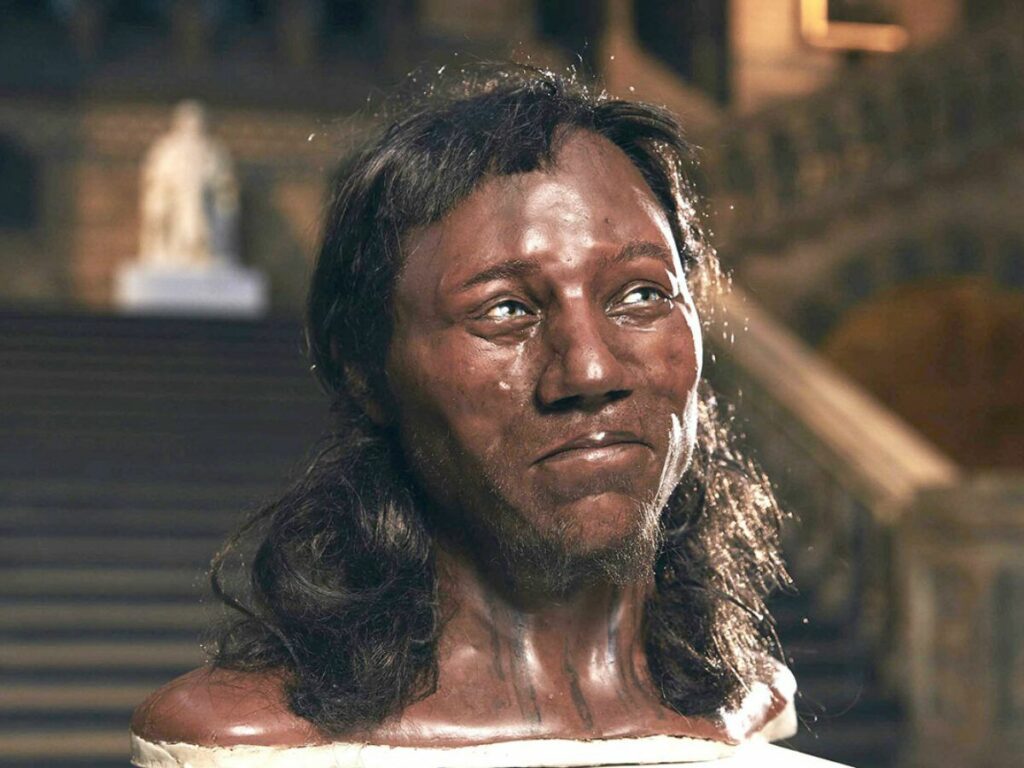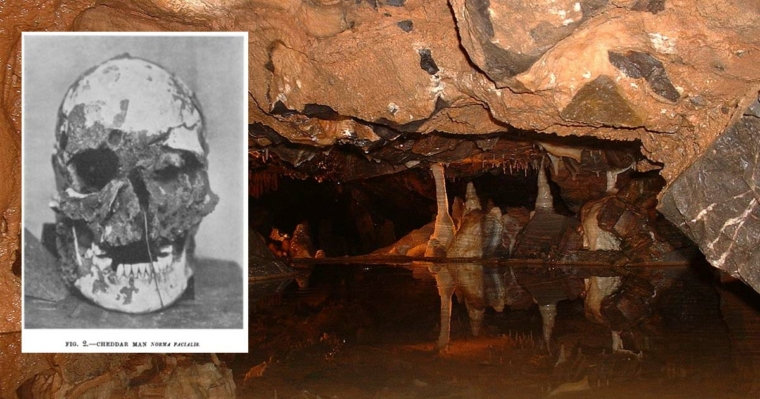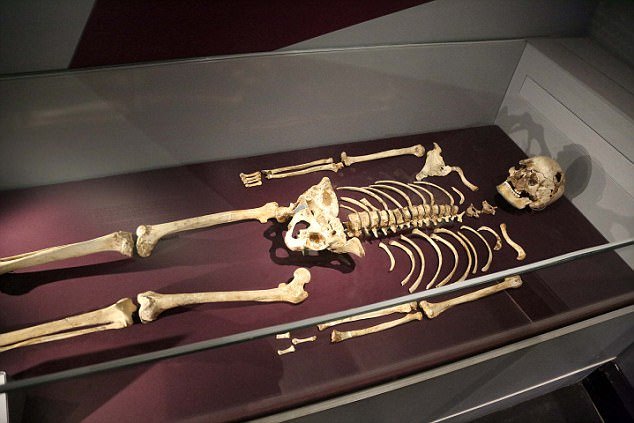‘Cheddar Man,’ Britain’s oldest skeleton, had a dark complexion, and DNA analysis revealed that he has a living relative currently living in the exact location.
The remains of a man found in Gough’s Cave in Cheddar Gorge, Somerset, England, around the turn of the 20th century, which is assumed to be from the Mesolithic era, were given the name Cheddar Man. Cheddar Man appears to have gotten little notice, and he was probably simply another prehistoric artifact among many.
One of the most amazing discoveries about this prehistoric man was made around the turn of the century: he had a descendent living in the exact location.
The discovery
 In 1903, the remains of a prehistoric person were found 20 meters (65 feet) inside Gough’s Cave, the largest of Cheddar Gorge’s 100 caves, beneath a layer of stalagmite, which was later found covered by a layer of more recent material.
In 1903, the remains of a prehistoric person were found 20 meters (65 feet) inside Gough’s Cave, the largest of Cheddar Gorge’s 100 caves, beneath a layer of stalagmite, which was later found covered by a layer of more recent material.
 Researchers found Cheddar Man buried alone in the mouth of a deep cave. According to dating results, he probably lived around 9000 years ago, during the Mesolithic period. Since his discovery, there has been little research on this prehistoric person, and he could be considered a minor person.
Researchers found Cheddar Man buried alone in the mouth of a deep cave. According to dating results, he probably lived around 9000 years ago, during the Mesolithic period. Since his discovery, there has been little research on this prehistoric person, and he could be considered a minor person.

The original skeleton of ‘Cheddar Man’.
An essay titled “The Cheddar Man: A Skeleton of Late Paleolithic Date” was published in 1914, 11 years after Cheddar Man’s discovery. One of the title elements that may strike a reader immediately is the assignment of Cheddar Man to the Late Paleolithic period, rather than the Mesolithic period when he is assumed to have lived.
One of the analyses carried out by the paper’s authors was the measurement of Cheddar Man’s skull. These figures were then compared to those found in other prehistoric skulls. They also analyzed other skeletal remains, such as teeth and limb bones.
The DNA of Cheddar Man
According to reports, in 1997, a living descendant of Cheddar Man was identified. Through the analysis of Cheddar Man’s molar, researchers found DNA. The DNA was then examined at Oxford University’s Institute of Molecular Medicine.
The DNA of 20 persons from Cheddar whose family had been known to have been in the town for several generations was then compared to the study’s findings. One of these individuals was discovered to be a Cheddar Man descendant.
Family of the Cheddar Man
Adrian Targett’s DNA was found to be identical to that of Cheddar Man, a 42-year-old man at the time of his discovery. According to a study, this genetic imprint is handed down from mother to child. To put it another way, Targett and Cheddar Man have the same maternal ancestor.
 It should note that Targett wasn’t the only one of his family members who refused to leave their ancestral home. According to reports, 46 people in his extended family, the majority of them still live in Somerset.
It should note that Targett wasn’t the only one of his family members who refused to leave their ancestral home. According to reports, 46 people in his extended family, the majority of them still live in Somerset.
Cheddar Man is the most famous collection of human remains found in Cheddar Gorge, but he is not the only one. According to one research, the site is “British’s most important site for Paleolithic human remains.”
Another set of famous human remains was discovered several decades ago. These three cups were made from the skulls of two humans and a three-year-old child. After re-examining these remains, scholars found that making skull cups was a traditional craft, and the heads were gathered when their owners died naturally.
Furthermore, numerous human bones were recovered with butchery traces, indicating that these archaic people were cannibals.



No comments:
Post a Comment